The dark city of Mehrdad Naraghi
Mehrdad Naraghi is an Iranian young photographer that I discovered the last year during the exhibition Photo Quai. I was immediately fascinated by his photographs of the city at night, dark, confused, where trees seem skeletal hands towards the sky and windows empty eyes.
As a consequence I contacted him, proposing an interview. I like the idea of giving space on Camera Obscura to a photographer who, at least in my imagination, comes from so far, I like the idea that the causality of a meeting with his images on the bridge of Paris, at the end produces this article.
Fabiano Busdraghi: How did you start taking pictures? What is your history as a photographer?
Mehrdad Naraghi: When I was going to university for studying Metallurgy Engineering I found out that I was so far from my lessons. So I started to experience some artistic activities which I really liked to do. At first I’d started to do Iranian Calligraphy, then I play Ney (An Iranian traditional Instrument) and finally I went to a photography institute to pass short term courses.
After all of these only photography has remained with me. I took different kind of photos such as journalism, industrial and architectural during past years, but finally I choose photography as a media to show my personal vision of life.
Fabiano Busdraghi: What is for you photography?
Mehrdad Naraghi: Photography is a way I’ve found to show my surroundings as the way I see. It has helped me to contact with people from deepest part of myself.
Fabiano Busdraghi: Can you say something about the technique and equipment you use? Digital or analog photography? Dark room or computer retouching?
Mehrdad Naraghi: At first I’d started with analog photography, but very soon I’ve found out that digital photography is the thing I was looking for. Controlling the light, color and some photo details in digital photography helps me a lot to show my idea clearly.
Nowadays I still work with my digital camera and softwares such as Photoshop and Lightroom.
Fabiano Busdraghi: Many of your pictures are taken at night, are dark and gloomy. Can you explain this choice? Why darkness is so important for you?
Mehrdad Naraghi: I like to control every details of my picture, so It’s very hard to do it when you’re taking picture in open air and you’re not in studio. So photography at night helps me to add or omit the details. Definite Light sources like street lamps and automobile lights are my equipments to get a picture. Taking gloomy photos (Specially in my first photos) was doing the same.
One more reason that many audiences tell me and I feel it too, unfortunately is about my country circumstances. In Iran you are not able to make a decision for future. Everything changes day by day. Changing people in power by elections make many things changes. New people may change all policies, plans and also programs that previous managers agreed. So It makes future gloomy for me, sorry to say it’s dark and gloomy.
Fabiano Busdraghi: Do you believe that to be Iranian, to live in a country with a culture different from the European one, can influence in your work? Or now globalization has virtually eliminated the barriers between states concerning art? The photographic vision is now global or regional differences remain important?
Mehrdad Naraghi: Actually this is one of the main issues that I struggle with it in my mind. As you can see my works doesn’t show even a sign that they are taken in Iran or by Iranian photographer. Many people have told me that my photos are very similar to which American or European photographers have gotten.
Some European people may be disappointed when they see my works, because when they hear about Iranian photography they want to see something from Iran very clearly. Some custom, places, controversial issues like censorship, Hijab and etc are important for them. Unfortunately these days Iran is always in headlines. Nuclear issues, president Ahmadinejad and many things cause that people from other countries want to know about Iran. So many curators in Europe prefer to show Iranian works, which obviously contain scenes of objection, opposition or disagreements.
Although many people like to see the exact sign of Iranian culture in my photos, but I’ve taken my photos the way I live. I wear Addidas shoes, Gap pants, I hear jazz music, I love Woody Allen movies and many European artistic films. I read many photography book or novel from world writers or photographers and so many things.
In my opinion the photography and also the art vision is now a global vision. It doesn’t mean that regional differences or different cultures are not important or they are not exist but they are not as obvious as they were before. They are so deep in the world that you could get every thing you want online.
As I said in previous question, regional differences in my works appear in the scenes I choose to show, in darkness, in sadness, in places that nobody exist in that.
Fabiano Busdraghi: You work, expose and sell your work mainly in Iran or abroad? How to describe the cultural and artistic life in Iran today?
Mehrdad Naraghi: I do all these three in Iran. Rarely do I get opportunity to expose my works abroad. During my travels I have chances to take photos in other countries, but financial matters don’t allow me to do a project in one place with efficient time.
Despite many galleries are opened in Tehran, art economy is still not serious. Especially in photography it is meaningless. The work prices are so less than world prices, many people are not interested to buy photo, art critics are so weak.
Government supports the artists only in directions that they want them to be. And big companies are not interested to be a sponsor for an art project. Publishers prefer to print photo books that contain pictures of nature or historical places of Iran. So living as a freelance photographer in Iran is a daydream.
Fabiano Busdraghi: The diffusion of your work is done by galleries, exhibitions, paper publications, etc, or is entrusted mainly to artistic circuits on Internet? What do you think of these initiatives? What are your favorite sites? Do you read any photo e-zine or online art magazine?
Mehrdad Naraghi: In first step I show my works in gallery then I put them on the web or in the magazine. Mostly I’ve got comments from audiences who see my works in different sites. I am grateful that I could establish my works on internet which many people see and write their ideas. It’s more economic than publishing a book and also it is distributed all over the world. Beside that I could see many artist works’ on internet which their books are not available in Iran.
Nowadays I am one of artreview members. It is a site that artists put their works and profile and many artists and curators see the works and discuss about it. It also has an online art magazine.
Fabiano Busdraghi: Sometimes photographers remember a photograph that have not taken because of technical problems, or because they preferred not to bring the camera to the eyes. These “never taken pictures” often remain long time in the memory and become loved images like the real ones. If it happened, can you tell the story of one of these photos?
Mehrdad Naraghi: Many of these situations happen when I am driving in the road. I see many scenes but I pass with high speed. Furthermore the state that you describe as never taken photographs is one of my bad dreams. I see scenes that are perfects when I’m sleeping. Light, Color, Composition are in the best level, but I couldn’t take it because of battery loss, finishing negative or something like this, and these scenes are in my mind all day.
Fabiano Busdraghi: I am doing a census among photographers: what are the fundamental characteristics of photography? What allows us to say that a photograph is precisely that? In particular, what differentiates the photographic image from other types of images, such as painting, lithography, video projections, etc… Do you think one can define what is photography and what it is not?
Mehrdad Naraghi: Showing the single moment which happens in 1/60 second or less is photography significant. These moments are not as same as previous or following moments. As an art photographer I think if an image contains photography aesthetic we could call it photograph, even if it is made by mix media or lithography or even painting.
It’s like difference between painting or drawing or illustration. They are so close. We could take a picture by camera but the result may be more close to painting than photography. Different techniques and materials make them very close to each other. In my opinion it’s more important to discuss about the value of picture as an image than argue about the name we call it.
Fabiano Busdraghi: Can you choose one of your image and tell its history?
Mehrdad Naraghi: I’ve taken many of my photos in ordinary places. They are the scenes that I select from my everyday path. So there is not such a history behind them, which is remarkable, maybe some personal notifications.
Fabiano Busdraghi: Can you tell a story of a photographic experience that has been especially important in your life?
Mehrdad Naraghi: Like many photographers I’ve had such experiences which they were remained in my mind, but they were more interesting than important.
I remember that near my university there was a very small grocery shop with an old salesman. Every time we were going there I was watching one big photo on the wall behind the salesman which showed the handsome young man. Me and my friends thought this was a picture of his son or brother who must killed in the war. Because It is usual to see photos of martyrs in many places in Iran. Once one of my friends asked him “Who is the man in the photo?” And he had answered: “This is me when I was young. In that time every woman came to my shop didn’t want to leave.” When I looked at him there wasn’t any sign of youth in his face. He had been old and ugly.
You could see how an ordinary uneducated man lives with a photo. This photo helped him to feel eternity and was an absolute document about his golden ages.
Fabiano Busdraghi: Is there some photographers, artists or people who were particularly important in your training or in your photographic life?
Mehrdad Naraghi: Actually I have not had any master till now. After I passed my short term courses in photography, I started to work by myself. The things I’d learned in courses were about how to take a photo basically. In that way I was used to take photo under constant rules which I’d learned. It was made me afraid to have experience in irregular ways.
Fortunately I’d meet one of the photographers, who I really admired his works, by accident. Madjid Korang Beheshti was one of my favorites Iranian photographers in that time, I could see him when he was taking photos and I feel how freely he did it. The way he took photos aware me that some times I can put some rules away. Rules which cease me to get new experiences. Maybe he doesn’t know at all, but that day changed my manner in taking photos.
And after that I took some photos which were caused that I was invited from Kourosh Adim, a creative photographer, to make a photography group with three other artists. I got many things during our group meeting, which helped me to make my personal photography vision.
Fabiano Busdraghi: A photographer that you particularly love and why.
Mehrdad Naraghi: Andreas Gursky, Sally Mann, Mona Kuhn are some of my favorite photographers. And I like many projects that other photographers do like Zona by Carl de Keyzer or End time city by Michael Ackerman.
I like the works which attract me by their beauty, and then I look for concepts. It’s obvious that I mean the beauty in my terms. I had a chance to enjoy watching Mona Kuhn works in Paris Photo. I found them so gorgeous that I wanted to stand in front of her works for hours. I felt getting pleasure by watching photos again. I’ve missed it during all kind of study in photography, reading many books and also seeing thousand of photos.
Fabiano Busdraghi: What book are you reading right now? What music are you listening during the last days? A movie you have seen recently that you particularly like?
Mehrdad Naraghi: Now I’m reading a novel by Eric Emmanuel Schmitt named Petits crime conjugaux and the book named Open Shutter by Micheal Wesely. I’m listening to Le pas du chat noir by Anouar Brahim. And the movie I’ve seen recently and I liked it so much was The Banishment by Andrei Zvyagintsev.
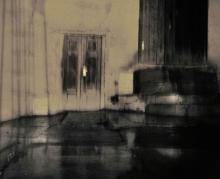
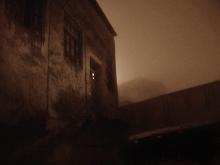
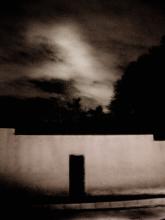
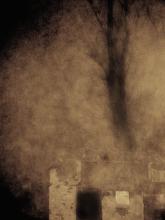
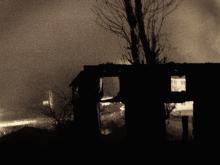
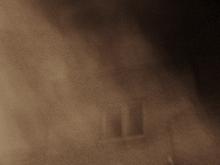
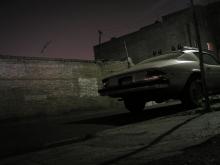
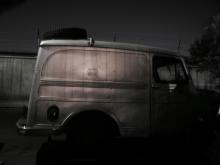
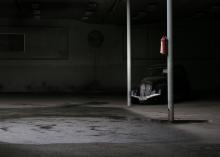
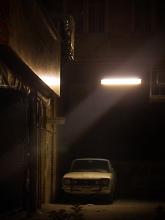
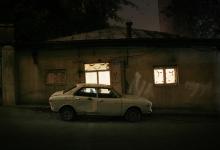
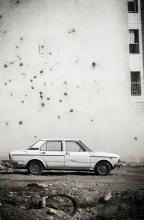
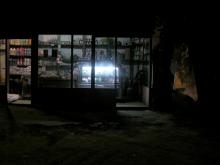
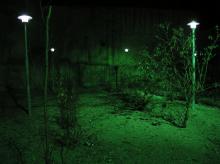
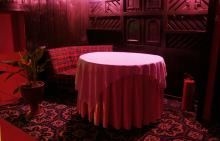
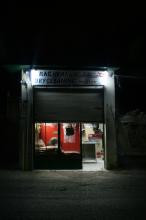





Saleh
said, June 25, 2008 @ 9:42 am :
hi mertat!
i was so happy to visit your work again.
good louk
Asian Photography Blog » Blog Archive » Mehrdad Naraghi
said, June 5, 2009 @ 5:45 am :
[...] View the full series on Naraghi’s website. There’s an interesting interview with him over at Camera Obscura. [...]
Mehrdad Naraghi « White Noise Of Everyday Life
said, June 12, 2009 @ 10:43 am :
[...] Interview with Naraghi at Camera Obscura [...]
Sunday reading: Interviews with Steacy, Diefenbach, Holdt and others | dvafoto
said, June 14, 2009 @ 3:58 pm :
[...] Obscura talks with Mehrdad Naraghi about, among other things, how he publishes and shows his photos in Iran. (via Asian Photography [...]
hossain
said, June 6, 2010 @ 1:10 pm :
hello
that is so interesting. hope you be well as you like to do your art.